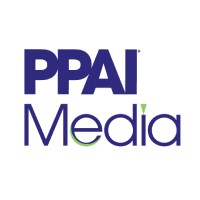UPDATE: A 90-day extension of a U.S. trade truce with China appears likely, as negotiations between the two countries wrapped up in Sweden. The current tariff arrangement is set to end August 12.
Just a few days before the August 1 tariff deadline, President Donald Trump has announced that the United States has reached a trade deal with the European Union following discussions with European Commission President Ursula von der Leyen.
Under the agreement, most imports from the EU will receive a 15% tariff, which won’t be added to any tariffs already in effect, CNBC reported.
- Certain chemicals, pharmaceuticals, aircrafts and their components, semiconductor equipment, some agricultural products, natural resources and critical raw materials aren’t subject to tariffs, von der Leyen later clarified.
Although the 15% tariff rate is lower than the 30% rate Trump had threatened, it’s still higher than the 10% baseline tariffs the EU was hoping for.
- The trade relationship between the two parties was valued at $1.97 trillion when taking into account both services and goods trading in 2024, according to the European Council.
Trump added that the EU also agreed to purchase $750 billion worth of U.S. energy and invest an additional $600 billion worth of investments into the U.S. above current levels. “It’s a very powerful deal, it’s a very big deal, it’s the biggest of all the deals,” Trump said.
The agreement doesn’t affect 50% tariffs on steel and aluminum imports, which applies to all countries except the United Kingdom and includes derivative products that contain those metals. On July 8, Trump announced a 50% tariff on copper imported into the U.S. also starting August 1.
- All of these metals are widely used in promo products, including drinkware, signage and tech gadgets, so promo firms are likely to face rising input prices across the board.
Other Trade Deals Reached
The U.S. has also finalized major trade agreements with Japan and Indonesia.
Japan: Under the new agreement, a 15% tariff will be imposed on most Japanese imports, a rate lower than many other Asian nations. In return, Japan – one of the U.S.’s largest trading partners – has agreed to significantly open its markets to American producers.
- Notably, U.S.-made cars and trucks will now face fewer barriers, as Japan formally accepts American safety and environmental standards for the first time.
Indonesia: The U.S. and Indonesia have agreed on a comprehensive framework for a reciprocal trade agreement that will eliminate almost all Indonesian tariffs on U.S. industrial, food and agricultural exports. In return, the U.S. will lower its tariffs on Indonesian goods to 19%, with potential for deeper reductions.
- Key elements include mutual recognition of regulatory standards and strengthened protections for intellectual property. Indonesia has also committed to significant labor and environmental reforms, including bans on forced labor imports.
The agreements provide a measure of much-needed certainty. Following these announcements, the S&P 500 hit a record high, and European and Asian markets also rallied. However, key negotiations with China and Mexico remain unresolved ahead of the August 1 deadline.
RELATED: ‘Supply Shocks’ Ahead? How Back-And-Forth Tariffs Are Affecting Global Shipping
Vietnam: On July 2, the U.S. announced a trade deal with Vietnam in which the U.S. will impose a 20% tariff on Vietnamese imports into the U.S. and 40% on goods transshipped through the country. Vietnam is a key alternate sourcing hub for promo, so this could have significant impact.
United Kingdom: The U.S. trade agreement with the United Kingdom was announced in May and took effect on June 30. A blanket 10% tariff now applies to U.K. goods imported into the United States. Law360 reported on July 25 that the U.K. is the only nation so far to receive guidance from U.S. Customs and Border Patrol.
Canada: On June 27, the president announced via social media that the U.S. would immediately halt trade negotiations with Canada because of that country’s digital services tax.
Both countries had stated a goal of reaching an agreement by July 21, but on July 10, Trump sent a letter declaring a 35% tariff on certain goods imported from Canada starting August 1 (exempting goods that comply with the USMCA), citing fentanyl and retaliatory measures from Canada. Prime Minister Mark Carney responded in a statement on X that “The Canadian government has steadfastly defended our workers and businesses. We will continue to do so as we work towards the revised deadline of August 1.”
ICYMI: From Capitol Hill To Crisis: A Firsthand Look At Tariffs’ Impact On Small Business
BRICS/Brazil: In a post on Truth Social, the president declared that countries “aligning themselves with the Anti-American policies” of the BRICS developing nations will be charged an extra 10% tariff, with no exceptions. The BRICS group – originally Brazil, Russia, India and China – now includes South Africa, Egypt, Ethiopia, Indonesia, Iran, Saudi Arabia, the United Arab Emirates and Indonesia. On July 9, the president announced a 50% tariff on all imports from Brazil starting on August 1.
On July 7, the president began notifying various countries of higher tariff rates to take effect on August 1:
- South Africa at 30%
- Bangladesh will be facing a 35% tariff as of August 1. This directly impacts the promo industry due to the significant amount of apparel sourced from the country.
- Thailand at 36%
- Tunisia at 25% (down from 28% announced in April)
- Bosnia at 30% (down from 35% announced in April)
- Serbia at 35% (down from 37% announced in April)
- Cambodia at 36% (down from 49% announced in April; also a significant source of apparel)
- South Korea at 25%


